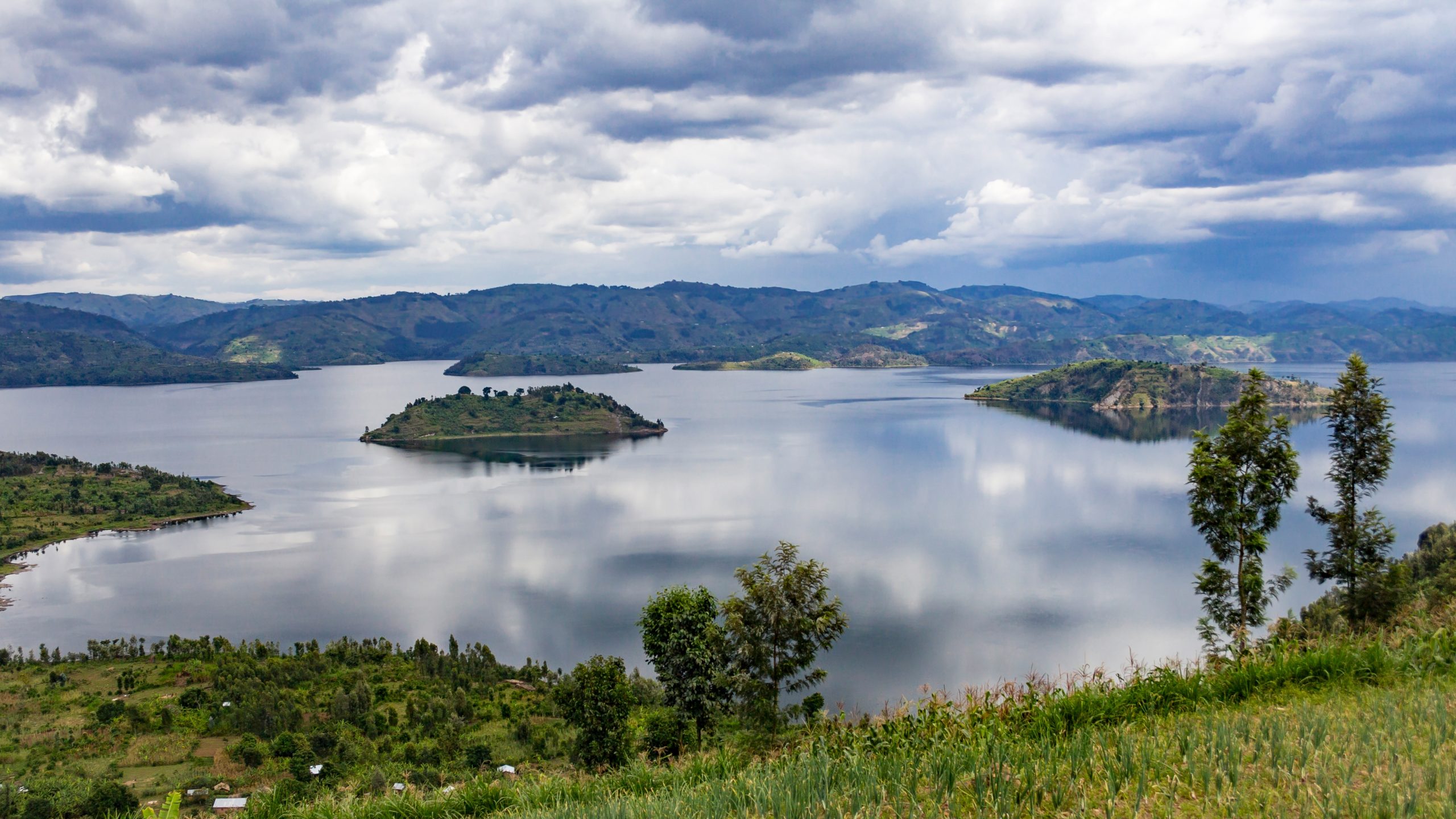Lake Kivu – one of the African Great Lakes – if unchecked, has the potential to cause climate catastrophe via a limnic eruption, where dissolved carbon dioxide would burst into the atmosphere. Consequences include mass casualties, food deserts created due to destroyed ecosystems (and potentially ensuing violent conflicts), and associated emissions contributing to climate change tipping points. Current solutions haven’t been able to truly mitigate Lake Kivu’s climate threat.
Given Lake Kivu is rich in natural biogas, it opens up an opportunity for companies to find a way to extract it. Outgassing the lake slowly, but consistently with set rules is the best-known way to prevent a limnic eruption. Any company that can effectively do so has the ability to leverage natural biogas to finance the construction of more plants and provide peace of mind to local residents.
Enter Hydragas Energy:
Hydragas Energy (Cleantech Open National 2021) preserves the lake’s safety by deploying a completely underwater design that involves managing the gas layers, which is soundly different from existing designs. This outperforms the previously discussed designs – also ensuring no disturbance of the lake’s layered structure. This design can increase the lake’s net gas yield five-fold, while sequestering the carbon dioxide and hydrogen sulfide for hundreds of years. This is possible, given the lake is a vast, natural carbon capture and sequestration (CCS) system. Methane removal adds a utilization component, making Lake Kivu an improvement to a carbon capture, utilization, and sequestration (CCUS) project.
Hydragas claims that it can prevent the release of 2 gigatons of carbon (Oxford Principles Cat II & III defining carbon emissions reduction). Emission reductions by this method will set a precedent. Furthermore, once all methane is removed, Kivu becomes a long-term, stable carbon storage system, upgrading to 5 gigatons capacity.
Hydragas is aspiring to be a renewable energy developer with the goal of safely managing Lake Kivu at the same time. Philip Morkel, Hydragas’ founder, built expertise in major energy projects in Africa, switching focus to the development of high-impact renewables. Morkel had a role in the international advisory group, supported by the World Bank Group on Lake Kivu. It evaluates the potential and safety of Lake Kivu’s development. He continued advisory work while working in Canada and began Kivu development full-time in 2018, registering Hydragas Energy.
How Hydragas Energy’s Extraction Plant Works:
All currently-existing projects siphon up the methane in deep water in order to be separated, cleaned and pumped to a power plant. The degassed water is then returned to the lake. However, the following problems appear if the degassed water isn’t managed properly in accordance with precise rules-of-use:
- Excess nutrients from deep, released near-surface leading to algal blooms in the lake
- Excessive hydrogen sulfide washed out will kill fish and oxic ecosystems in the biozone
- Excess carbon dioxide releases increase concentration in shallow water, increasing partial pressure and the threat of the lake experiencing limnic eruptions
Hydragas’s design follows the best practices for extracting the lake’s methane, as outlined by an international group of researchers. Hydragas’ founder was one of the co-authors of the rules, also known as the ‘management prescriptions’ (MPs). The strategy favored by the panel is called the density zone preservation method. It requires controlling the density of degassed waters, by managing its concentration of reinjected carbon dioxide, so they can be carefully returned to the lake without causing mixing into gas-rich water. Their method is claimed to be multiple times more efficient than existing plant designs as well. Their productivity further justifies their economic case for the plant, which they are aiming to prove with their demo plant.
Meeting Wider Energy Market Needs:
The scale of this plant Hydragas is planning is the primary reason they are approaching the financing of this asset through developing multiple revenue streams. Philip sees the opportunity to generate revenue by selling the natural biogas as a commodity, leveraging carbon credits generated from replacing diesel and charcoal used for power and heating in the local region and better managing the density layers within the lake on behalf of the governments.
Per Philip Morkel, Lake Kivu has the extraction potential for up to $32 billion in direct revenues over the next 50 years, with high returns and >80% free cash flow.
Replacing Charcoal With Natural Biogas
Right now, electricity in the region is steadily transforming from diesel generation to renewables. However, 99% of cooking and heating are fueled by charcoal, contributing to deforestation. As a result, charcoal demand takes up a large portion of family income, not to mention its health effects on family and communities. As with the Amazon forest, its increased burning currently negatively impacts the global carbon budget.
Generating Carbon Offsets By Replacing Charcoal
Pipeline gas, produced by extracting Lake Kivu’s methane efficiently, can mitigate deforestation pressure on the region – especially when incentives exist with subsidies funded by the carbon offset market.
Hydragas’s gas extraction design is the one capable of producing high-quality gas, 90% methane and 98% carbon dioxide as product gasses. Biomethane is used for power generation, as pipeline gas for domestic cooking, industrial heating, etc. But carbon dioxide also has potential as an industrial feedstock, of which Africa has a deficit. Examples include carbonated beverage production, dry ice to refrigerate perishable items; i.e. medicine, produce, meat, and beverages, protein powder production, and synthetic fuel (e.g. ethanol, butanol) production.
Potential Of Permafrost Management Applications
Gasses trapped in permafrost pose a major threat to the climate. According to a 2014 estimate by the United Nations Environment Programme report (page 20), the total amount of methane contained in the world’s gas hydrates range from 1500 to 15,000 gigatonnes of carbon. These gasses pose a danger to altering the tipping point of our climate’s ecosystem.
Hydragas’ technology with modifications could be deployed to recover the methane gas in the melting permafrost at sea, under the ice-cap. But the sheer scale of unaddressed methane emissions in the Arctic demands attention.
Future Outlook:
Hydragas Energy is looking to:
- build a full-scale demonstration project on Lake Kivu as a precursor to commercial build-out
- support research and development to validate the technology for use in the Arctic Basin
Hydragas is also trying to raise the profile of this problem within the international community, as a humanitarian investment opportunity to alleviate energy poverty in both Rwanda and DR Congo, while mitigating potential immediate and long-term catastrophe.
Even though Hydragas has demonstrable expertise in managing the lake’s resources, it faces headwinds. Hydragas, lacking some of the high-level political support of some competitors, has a disadvantage. Sufficient consensus from the global north post-COP26 global is needed before demonstration projects (required by regulations to prove their performance) can be sufficiently financed to get off the ground.
Regional conflicts and potential natural disasters also provide headwinds that hinder progress in funding projects on the lake, despite major impacts to curb emissions and solve energy poverty. Lake Kivu is a classic example of the global coordination required to deal with climate change.
About The Author

Stanley is currently evaluating his next steps as an individual contributor adapting and mitigating climate change. He has diverse background in technology and business. Most recently helped COSMIC Medical (cosmicmedical.ca) get off the ground by connecting with other like-minded altruists to solve complex problems related to access to medical treatments. He has also co-organized online events with MDG Boston. Stanley holds a BS in Electrical Engineering from University of British Columbia.

